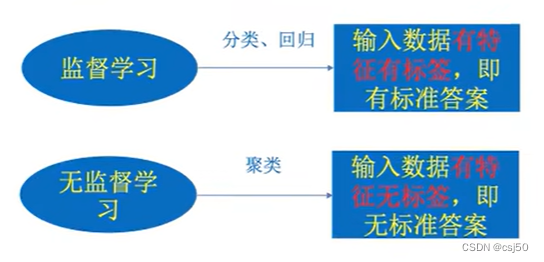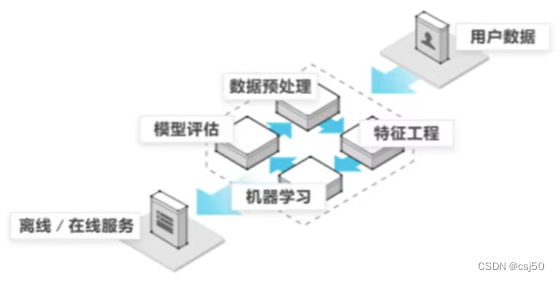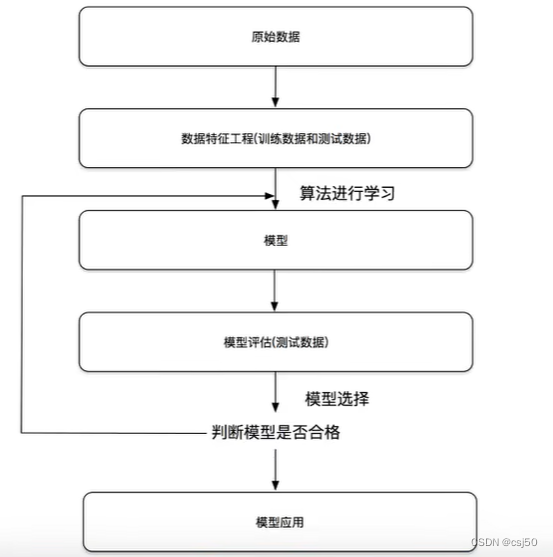1. Machine learning and artificial intelligence, deep learning
1. Machine learning is a way to realize artificial intelligence
2. Deep learning is a method developed from machine learning
2. Statistical learning and machine learning
Actual machine learning has appeared in the 1980s, and those who engage in statistics
There is a method in machine learning called artificial neural network, which has been developed into deep learning.
3. What can machine learning and deep learning do?
There are many application scenarios for machine learning, and it can be said that it has penetrated into various industries. Various scenarios in the fields of medical care, aviation, education, logistics, e-commerce, etc.
Machine learning field:
1. Traditional prediction
2. Image recognition
3. Natural language processing
Used in mining and prediction fields:
Application scenarios: store sales forecast, quantitative investment, advertising recommendation, corporate customer classification, SQL statement security detection classification...
Used in the image field:
application scenarios: street traffic sign detection, face recognition, etc.
Used in the field of natural language processing:
application scenarios: text classification, sentiment analysis, automatic chat, text detection, etc.
4. What is machine learning
1. Definition
Machine learning is to automatically analyze and obtain a model from data, and use the model to predict unknown data.
2. Explanation
We humans summarize rules from a large amount of daily experience. When faced with new problems, we can use the rules summarized in the past to analyze the actual situation and adopt the best strategy.
Recognition of cats and dogs:
Automatically analyze and obtain models (the rules for identifying cats and dogs) from data (a large number of pictures of cats and dogs), so that the machine has the ability to identify cats and dogs
Predicting house prices:
Automatically analyze and obtain models (judging the rules of house prices) from data (various information about houses), so that the machine has the ability to predict house prices.
Question to think about:
Obtain patterns from historical data. What is the format of these historical data?
3. Data set
structure: feature value + target value
Note:
For each row of data we can call it a sample.
Some data sets can have no target value.
5. Machine learning algorithm classification
1. How to distinguish cats and dogs
Feature value: cat/dog picture
Target value: cat/dog - category
is a classification problem
2. Predict the house price.
Feature value: various attribute information of the house.
Target value: house price-continuous data
is a regression problem.
3. Identify occupations.
Feature value: various attribute information of the character.
Target value: None
. Unsupervised learning.
4. Classification
Target value: Category - Classification problem
Target value: Continuous data - Regression problem
Target value: None - Unsupervised learning
Classification is logistic regression, prediction is linear regression
5. Small exercise:
Predict what the temperature will be tomorrow? Regression
Predict whether it will be cloudy, sunny or rainy tomorrow? Classification
Prediction of facial age? Specific age: regression problem; judging size: classification problem
Face recognition? Classification
6. Supervised learning (prediction)
definition: input data consists of input feature values and target values. The output of the function can be a continuous value (called regression), or the output can be a finite number of discrete values (called classification).
Classification: k-nearest neighbor algorithm, Bayesian classification, decision tree and random forest, logistic regression
: Linear regression, ridge regression
7. Unsupervised learning (unsupervised learning)
definition: input data is composed of input feature values.
Clustering: k-means
6. Machine learning development process

Steps:
1. Obtain data (crawler)
2. Data processing (data analysis)
3. Feature engineering
4. Use machine learning algorithm to train, and get the model after training
5. Model evaluation (validation set)
If the model is better, it can be applied If
the model is not good, return to the data processing and start over again to generate a new model.
7. Learning Framework and Materials
1. Several issues need to be clarified
(1) Algorithm is the core, data and calculation are the foundation
(2) Find the correct positioning
2. Most of the algorithm design of complex models is done by algorithm engineers, and we
(1) analyze a lot of data
(2) analyze specific businesses
(3) apply common algorithms
(4) feature engineering, parameter adjustment, and optimization
3. What should we do
(1) Learn to analyze problems, the purpose of using machine learning algorithms, and what tasks you want the algorithm to accomplish
(2) Master the basic ideas of algorithms and learn to use corresponding algorithms to solve problems
(3) Learn to use libraries or Framework to solve problems
At present, it is important to master some skills such as machine learning algorithms and solve problems from a certain business field.
Machine learning--"Watermelon Book" Zhou Zhihua
Statistical learning method--Li Hang
Deep learning--"Flower Book"
4. Libraries and frameworks.
Become a package manager first~
pytorch, tensorflow, theano, caffe2, chainer, Huawei's mindspore
theano can be regarded as the predecessor of tensorflow,
chainer can be regarded as the predecessor of pytorch